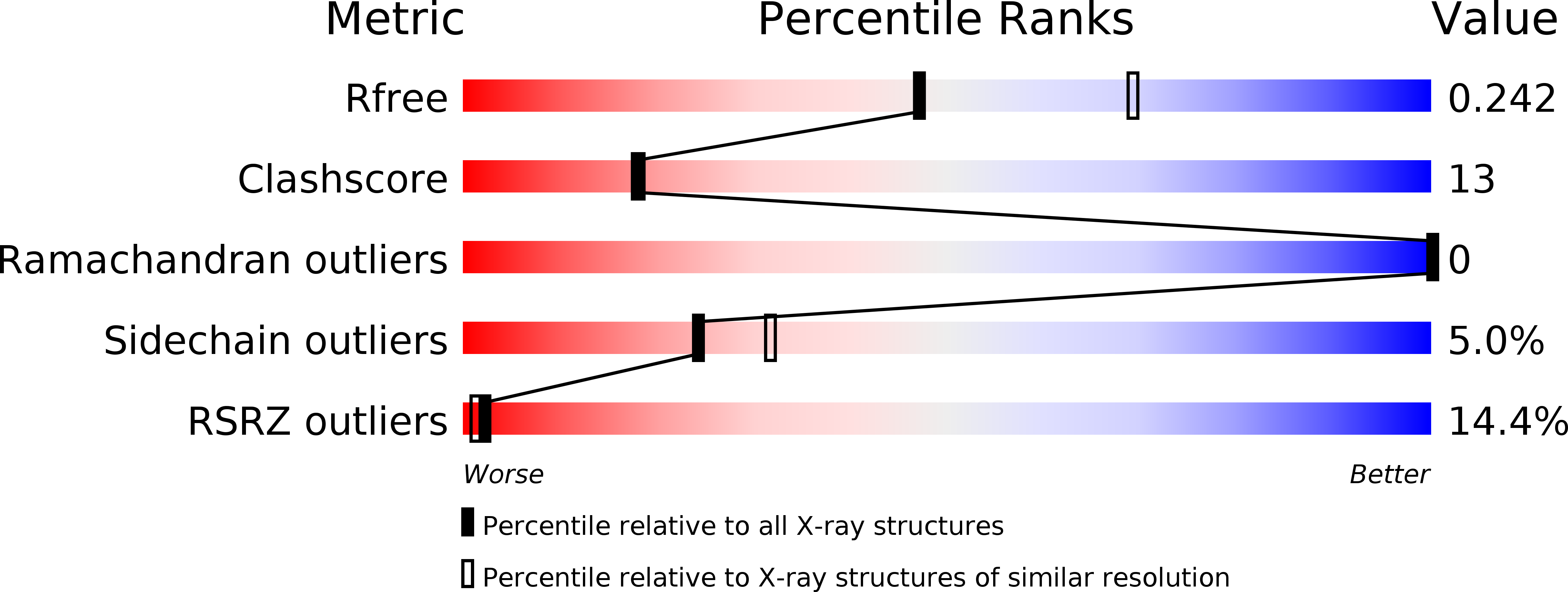
Deposition Date
2011-06-17
Release Date
2012-06-20
Last Version Date
2024-03-13
Entry Detail
PDB ID:
3B0Z
Keywords:
Title:
Crystal structure of cytoplasmic domain of FlhB from Salmonella typhimurium
Biological Source:
Source Organism:
Host Organism:
Method Details:
Experimental Method:
Resolution:
2.45 Å
R-Value Free:
0.24
R-Value Work:
0.23
R-Value Observed:
0.23
Space Group:
P 42 21 2


